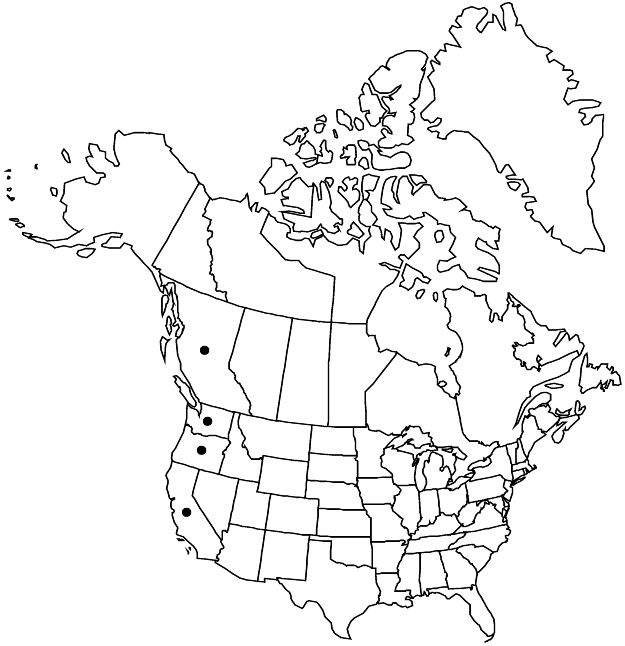Rubus lasiococcus
Proc. Amer. Acad. Arts 17: 201. 1882.
Herbs, 1–1.5 dm, unarmed. Stems creeping, flowering branches erect, sparsely hairy, eglandular or sparsely to moderately short-stipitate-glandular, not pruinose. Leaves deciduous, simple or ternate; stipules broadly elliptic to ovate, 5–10 mm; leaflets 3 (–5), blade reniform or orbiculate, terminal lobe or leaflets broadly obovate to obovate-cuneate, 1.5–4 (–6) × 1.5–4 (–6) cm, base cordate, 3 (–5) -lobed, margins coarsely doubly dentate, apex rounded to acute, abaxial surfaces sparsely hairy on veins, eglandular. Inflorescences 1–2-flowered. Pedicels sparsely to moderately hairy, short-stipitate-glandular. Flowers bisexual; petals white, broadly elliptic to obovate to orbiculate, (5–) 8–10 (–12) mm; filaments filiform; ovaries densely hairy, styles filiform, glabrous. Fruits red, hemispheric, 1 cm; drupelets 5–15, weakly coherent, falling separately or as loose units free from torus. 2n = 14.
Phenology: Flowering May–Aug.
Habitat: Moist to dry, semiopen forests, wet meadows, roadsides, dry sand
Elevation: 800–2000 m
Distribution

B.C., Calif., Oreg., Wash.
Discussion
Rubus lasiococcus is recognized by its creeping, unarmed stems, simple 3-lobed to 3-foliate leaves, small flowers, white petals, and densely hairy ovaries.
Selected References
None.
Lower Taxa
"thin" is not a number."dm" is not declared as a valid unit of measurement for this property.